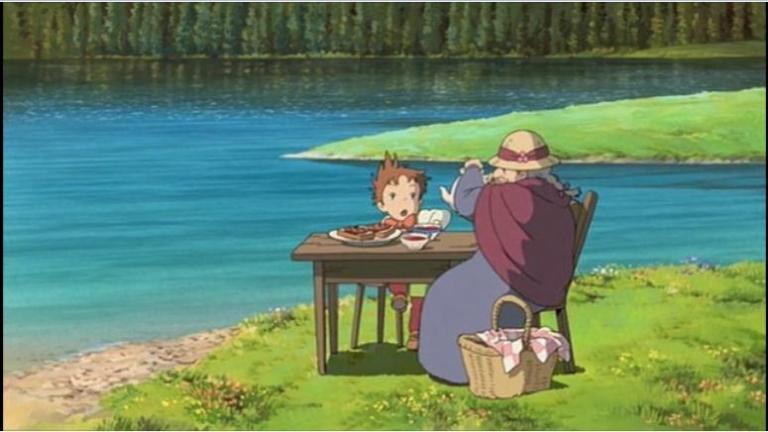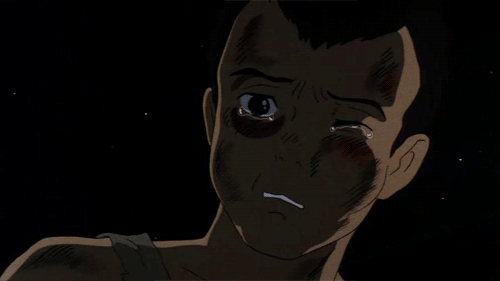The World War II is considered by many as the largest war in human history. With casualties estimated to be 40-50 million deaths, it is also considered as the bloodiest conflict. It involved world’s superpowers at that time. It divided the world into two factions; Axis Powers consists of the Germany, Italy and Japan while Allied Powers consists of France, Great Britain and United States. The war started when Germany, under the leadership of Adolf Hitler, tried to take over Poland. The war ended with the collapse of successful bombing in Japan and the collapse of Germany. (Hughes, n.d.)
Films set on WWII usually show the armed conflict between military forces of Allied and Axis powers. They usually showcase the heroics of certain well-known soldiers and generals or complicated plans and schemes on how the Allied forces defeated the Axis. Many films depict the Allied forces as the antagonistic to the ideals of justice and freedom. Germany commonly depicted as the stubborn, ruthless country led by the highly aggressive dictator. Japan is also depicted as aggressive empire conquering other countries in Asia.
Grave of the Fireflies (1988) is a Japanese animated drama film directed by Isao Takahata and produced by Toru Hara. It is based on the semi-biographical short story under the same title written by Akiyuki Nosaka. The film is animated by the production company Studio Ghibli. The company is considered by many as one of the best animating studios in the industry with works such as Princess Mononoke, Howl’s Moving Castle, Sprited Away, etc. The film was released as a double feature along side another Studio Ghibli Film titled My Neighbor Totoro. Although My Neighbor Totoro was a financial success, Grave of the Fireflies was having difficulty gathering movie viewers. Despite its financial difficulties at the time of its showing, it is still considered by many critics as one of the most powerful anti-war films created.
The story
The film starts with a night sometime after the end of WWII, a boy is shown to be slumped in a pillar and dying of starvation. Officers took care of the body and found a candy tin in which the officer threw it out in a nearby field. We are shown the spirit of the same boy picking up the same candy tin and is joined by a spirit of another younger child in a field of fireflies. The film then proceeds with a flashback of the final few months of the war.
In a village in Kobe, a fleet of American plane bombers dropped an air strike in the area. Seita and his little sister Setsuno were separated from their mother and were unable to to reach the bomb shelter. After the air raid, the mother is shown to have died and the siblings went to live with their aunt. With scarce food and water and Seita not being able to find a job, the aunt grew irritated of taking care of the siblings. The aunt sells their mother’s kimonos for rice but keeps bigger portion of the rice for her family. The aunt tells them that food should be given to people who are actually serving the country. If they wanted food they should earn it. During wartime conditions, even family and relatives find it hard to be generous.
The siblings eventually left the house and they occupied an abandoned bomb shelter near the river. They were forced to live on their own with limited food and money. Seita resulted to stealing food and looting materials during air raids. Setsuko then is shown to be dying of malnutrition and Seita is forced to make withdrawal of the very little amount of money they have left. It is there that Seita learned that Japan surrendered unconditionally and their father, who is a captain of Imperial Japanese Navy, died. Eventually Setsuko died before Seita was able to finish cooking food for her. Seita cremated her remains and carried her sister’s ashes in the candy tin until he eventually died of starvation in Shinomiya Station in September 21, 1945.
The film
There is nothing much I can say about the technical aspects of the film for I am not qualified to be a film critic. I am hardly a film enthusiast. I am just a casual movie viewer. There is also nothing much I can say about the anime’s artistic technicalities because I am not very artistic myself. The things that I liked most about the film were the backgrounds and the landscapes. The landscapes were drawn something like an oil painting or a still image. The images of the rice fields, the town or the lake appear vivid but at the same time realistic.
There are also differences that can be observed when comparing on how the show depicts towns from rural areas. The film usually shows the town to be dull or dark colored for it is constantly bombarded by air raids. It somehow conveys the feeling of despair or sadness. In these images are the scenes in which the siblings are in constant panic or scared. When showing images of lakes or rural fields, the colors appear to be more brighter. The images appear to be more lively and dynamic. In these images are the scenes in which the siblings are shown to be happy most of the time. As much as it is design choice, the setting is also geographical. Air raids are usually done in human settlements such as towns to inflict as much damage as possible. The rural areas are usually left out because of the dispersed houses. There are many things that can be said about Studio Ghibli’s presentation of landscapes that make them recognizable as greatest Japanese animation. Their landscapes usually appear to be near mystical. In Grave of the Fireflies, their landscapes usually appear to be more realistic than mystical.


Landscapes. Howl’s Moving Castle(2004) by Studio Ghibli



Landscapes. Grave of the Fireflies (1988) by Studio Ghibli
Another thing they I liked about the film was the animation of the people’s faces. It is interesting how they depict human emotions with exaggerated movements but without distorting much of the fact that the animating object is human. There are several scenes in which Seita breaks down and cries. The way they show how the lower lips shake and his face distorts as he cries makes it way more believable that Seita is actually sad and crying.

Seita Crying
WWII films are dominated by Western films depicting America or the Allied powers in armed conflict with Axis countries. They usually antagonize Axis countries to show that Western powers represent the righteous cause. Sharp(2009) discusses the role of media in which “mediate all of our understandings and interactions with the rest of the world”. Western movies control the understanding on what happened in global events such as WWII.
This film for me is a lot more than just a powerful dramatic story of how the siblings try to live outside the system during war times.This movie shows a very different side of Japan and its people from the common depiction in western movies. It is like a protest to the common depictions of Japanese as ruthless invaders and the one that attacked Pearl Harbor. This film shows a very tragic but also equally real world setting of how Japan is also affected by the WWII. It even antagonizes the American planes for destroying lives and communities in parts of Japan. The film did not rely on big action scenes but focused on the struggle of daily lives during wartime. It did not rely on melodramatic pieces to convey the despair of the second world war.It is also of different medium than the rest of WWII films that I saw. The story is told in an animated medium, in which at that time, was still considered to be for younger audiences only.Not everyone expected an animated film to influence grief upon its audience. The film provides a very different perspective on the events of WWII.
References:
Hughes(n.d.). World War II. http://www.britannica.com/event/World-War-II/The-Allied-landings-in-Europe-and-the-defeat-of-the-Axis-powers. last retrieved November 29,2015
Screen shots from scenes of Howl’s Moving Castle and Grave of the Fireflies


Grave of the Fireflies. I initially couldn’t believe that this is a Studio Ghibli production after being initiated with feel good animations like Spirited Away, Howl’s Moving Castle and Princess Mononoke. This film breaks my heart very single time. Thanks for blogging this!
LikeLike